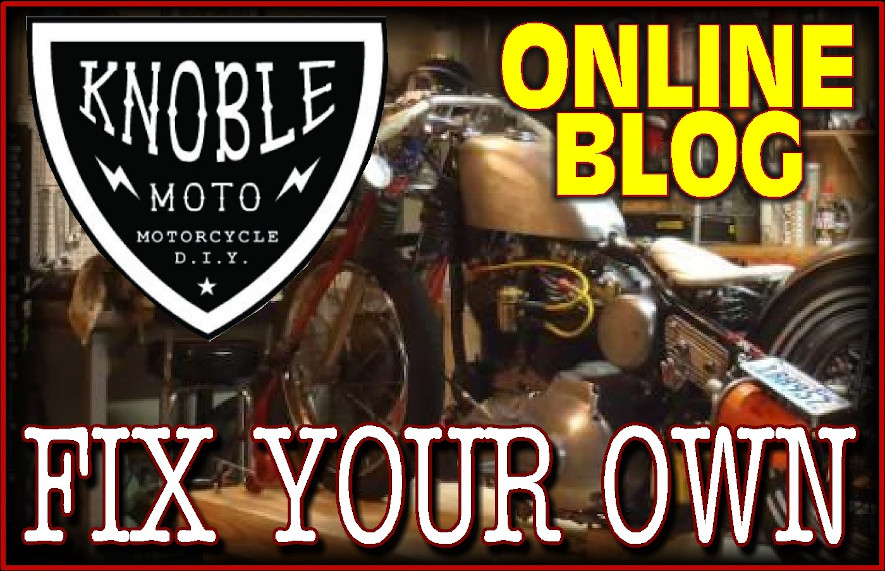
Who doesn’t love old motorcycles? I can’t recall ever meeting a motorcyclist who didn’t have some desire to fix up an old motorcycle, or at least want to own one. I have been fortunate enough to have had the opportunity to fix up few motorcycles over the years. If you have the desire to take on a project like this, I highly encourage it. Overall the task appears to be quite daunting, but when you break it down and take things step by step, the project will seem notably less overwhelming. Over the next few months I will be writing a series of articles with a focus on the restoration of a ‘72 Yamaha XS650.
Here is where to start:
Assess the project and potential:
If you are looking for a project bike, spend a little time searching the availability of parts for that bike. A massive shortage of replacement parts can make a project difficult or almost impossible, plus this will also help you estimate a budget for your project. Another good idea is to see what resources are available for technical information and advice. Owner’s forums/clubs are always great places to start looking for this information. Plus sometimes it is easier to locate a suitable bike once you are in the loop of owners and collectors.
Find the bike:
Before you purchase the bike, try and do a thorough inspection, to be sure that it’s actually restorable, and not so far gone that it’s just a parts bike. Is the frame solid and straight, any weld repairs, or structural rust? Speaking of rust–is the tank rusty? Replacement tanks can be expensive or hard to find, and removing the rust can be exceptionally difficult.
If possible, can you turn the engine over and check for compression? Some sellers may not let you do this, and you have to respect their wishes. What parts need to be replaced, and will that blow your budget? Or should you spend a little more money on a project bike, and not have to replace some expensive parts. Don’t overlook the nickel and dime parts too, because they can add up quickly. Does it have a title? There are a few options for getting a lost title, but they all take time, money, and patience. But enough about money, we don’t do this to save cash.
Mileage. Obviously low mileage means there has been little usage on the engine. However that does not mean it is going to be trouble free. Low mileage means it sat. When stuff sits, stuff rots and rusts. Internal motor parts can rust over, and anything rubber can dry out. Many times I have gotten an old motor running, and not long after, it begins leaking out random gaskets. Now, leaky gaskets should not be unfamiliar territory to a motorcycle mechanic, but when it is all the gaskets, it can be frustrating. So don’t expect a motor to be trouble free just because the odometer shows low mileage.
Now let’s say you already have a bike in your garage that you have chosen. Before you dive in and just start tearing stuff apart, make sure you have some space to work on it, and space to store the parts that you take off. Get a few organizing supplies first. Things like, plastic bags with labels that you can write on, masking tape and a marker for larger items. Also plastic totes to keep items in, and have them in a safe and movable manner, plus pen and paper for notes and drawings. Last but not least, a camera. Taking pictures of parts and connectors as you disassemble them will be invaluable when it comes time for reassembly. And of course, print out any manuals or guides that you can get your hands on.
Good Luck!
Here is a little about our project, the ‘72 Yamaha XS650.
This bike was donated to Skidmark Garage by someone who claimed it ran a few years ago but wouldn’t shift. That’s right, it “ran when parked”
After an initial inspection by Brian and myself, we evicted the mice from inside the seat. Apparently 70’s seat foam makes for nice mouse housing. We then decided that vintage paint job was amazing and should be saved, plus the trigger start switch/compression release was possibly the coolest thing ever.
After a thorough inspection, I found the wiring was old, but unmolested. Seat was garbage, the carbs were clogged solid, and the shifter didn’t work right because the bolts were broken off of the left side engine case. Because of this, every time you pulled the clutch in, the pressure from the clutch linkage would make the engine case flex out. Chain was shot and the tires beyond shot. (I was genuinely nervous to put more than 10 psi in them, with my head in close proximity). Suspension – shot. Brakes – surprisingly worked well, but we would rebuild anyways. Motor had good compression and the exhaust was solid and in decent shape. All other components appeared to be present.
Check back each month for updates on the progress! Knoble Moto is a partner of Skidmark Garage. We teach classes for the DIY crowd, on all aspects of motorcycle repair. Entry level maintenance, valve adjustments, carburetor cleaning and tuning, drive line service, suspensions, and even engine work. Our class subjects are updated regularly, so check back often. If there is a subject you do not see covered, shoot me an email at knoblemoto@gmail.com Find us on Facebook at www.facebook.com/knoblemoto, Instagram Knoble_Moto and www.KnobleMoto.com



